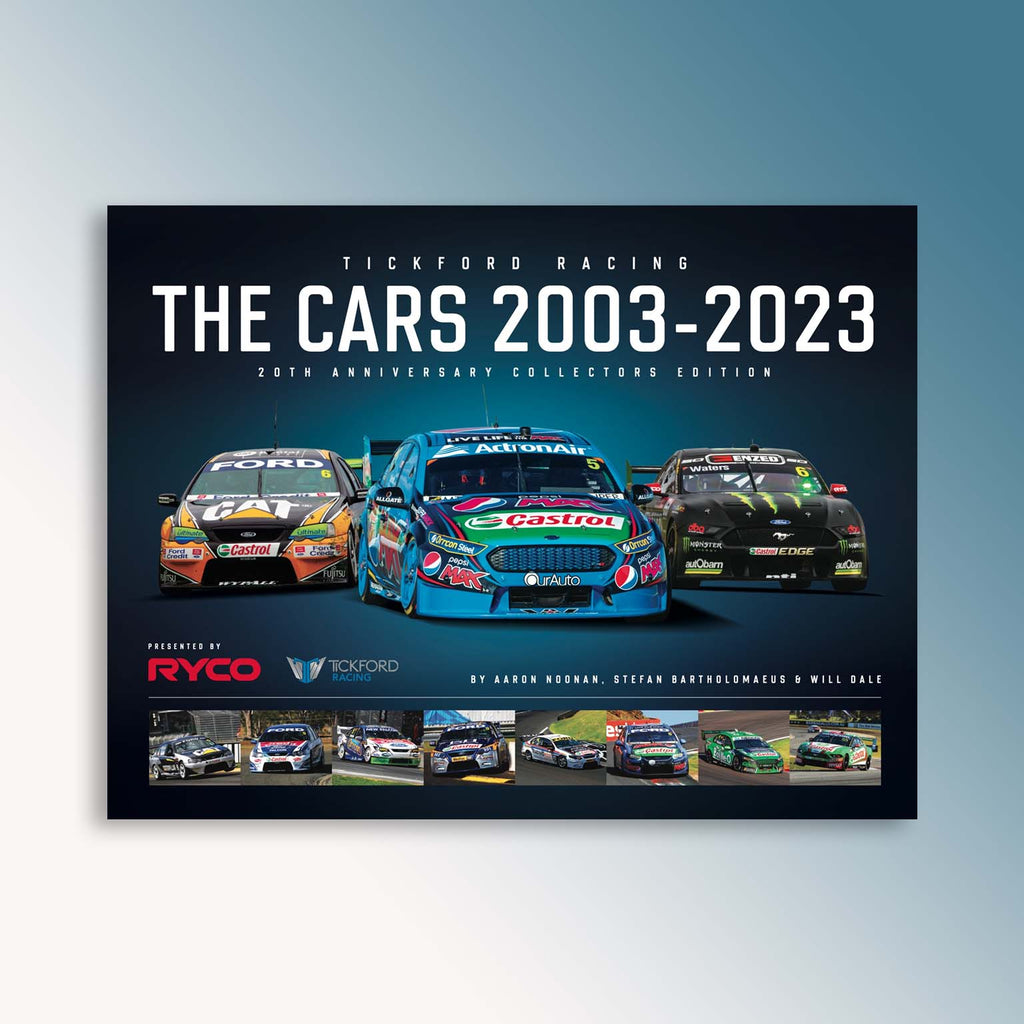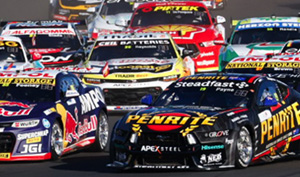SUPERCARS’ much-trumpeted wind tunnel program with its Gen3 cars in the United States marked the first time the category had undertaken parity testing with such technology.
But it’s certainly not the first time that Supercars have been tunnel tested.
Before the practice was outlawed in the late 2000s, several squads sent cars offshore for wind tunnel and/or shaker rig work in a bid to gain an edge on their rivals.
Among those to do so in secret was Ford Performance Racing, as revealed in V8 Sleuth’s new book, Tickford Racing: The Cars, 2003-2023.
The then Prodrive UK-owned team’s offshore program took place over the 2005/06 off-season and was arguably the most comprehensive of any of the era.
The tests were run following its first season under the direction of Tim Edwards, who coincidentally oversaw the 2023 Gen3 tunnel program in his new role as Supercars motorsport boss.
As detailed in the 400-page Tickford: The Cars collectors’ book, the team dispatched FPR 502 – a car that Bright had debuted midway through 2005 – to the United Kingdom following the season finale.
There the Falcon underwent analysis at Prodrive’s headquarters in Oxfordshire before spending time on the Dynamic Suspension shaker rig in Norfolk and the MIRA wind tunnel in Warwickshire.

Following that it was off to Germany, where FPR 502 was run in Ford’s own expansive wind tunnel facility in Cologne.
Those from FPR on the 2006 trip included technical director Phil Keed, who had previously worked at Prodrive’s Subaru World Rally Team, crew chief Chris O’Toole and data engineer Mark Hester.
Although the bodywork for the BA Falcon was already homologated, Keed explains that the benefits of taking a V8 Supercar to a wind tunnel were two-fold.
“At the Cologne tunnel you could yaw the car and do all these other things, so partly it was a characterisation of where you start to have efficiency loses, where you should aim to try and run wing angles and rake and things like that,” Keed explained.
“But back then there were lots of freedoms as well; there used to be quite a lot of opportunity to evolve until something was clarified in the rules.
“The underbody of the car is easy to ignore, but there’s an awful lot of airflow going on under there, so there’s lots of benefits to getting certain items out of the airstream, making the air flow more smoothly.
“The fuel tank was a big one. It was quite a trade-off with Centre of Gravity, but we went over with a number of different fuel-tank dimensions, some flatter and longer, raising the fuel tank up.
“That made a huge difference in those days. The cars now are designed such that the rear wheel tubs basically vent or flow air back into the section under the rear bumper.
“Back then, the wheel tub closed off and the bumper was almost like a parachute.”

FPR 502 returned to Australia in time for the 2006 season-opening Adelaide 500, where what was expected to be a title-challenging campaign for Bright started on a sour note.
“We got to Adelaide and the way it transitioned to the track was diabolical,” explained Bright, who had also attended the Cologne wind tunnel while in Europe to test with Prodrive’s GT team.
“It was something ridiculous in the amount of front downforce that we’d found, and we didn’t really find any at the rear.
“The practice session in Adelaide, the car was so oversteery that I crashed at Turn 8 on a slowdown lap.
“I was just coming back to the pits and not hanging on for dear life like you would on a hotlap and it just oversteered into the fence!”

History shows that FPR did emerge as a powerhouse in 2006, as both Bright and new teammate Mark Winterbottom won races, but it took a while to turn the off-season lessons into speed.
“Even though we learnt a lot from the testing overseas, it probably set us back a little bit,” added Bright, who drove a repaired FPR 502 in Adelaide and at Albert Park before swapping into an older chassis for the rest of the campaign.
“We needed to take information from it and use it as a tuning tool, not just throw it all at the car at once.
“It took us a couple of rounds to get a handle on the window that the car needed to be in and then the second half of the year was strong.”
For more details on FPR’s offshore test program and other insights, secure your copy of Tickford: The Cars, 2003:2023 via the V8 Sleuth Superstore.





